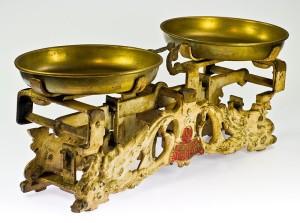
Earlier this week I wrote a blog post for the Guardian, explaining why I chose to give birth to my second child at home under independent care. I had been accused – as women who give birth at home often are – of endangering my baby’s life for my own birth experience.
Critics of home birth tend to focus on the risk that a baby might die if anything goes wrong during labour. Actually, I pointed out, trials suggest that for most women, the death rate for babies is no higher at home than in hospital. But even for those who face an increased risk (first time mothers, for example, or women with a previous c-section, like me), the headline risk across a population is not the whole story. It needs to be interpreted based on a woman’s individual circumstances, and balanced against a range of other dangers (there are risks for giving birth in hospital too).
This is a pertinent debate right now because the UK’s independent midwives – who work outside the NHS – are under threat. Whereas the NHS takes a strict one-size-fits-all approach to birth and has a high rate of medical intervention, independent midwives help women to make decisions about birth based on their own individual priorities and risks, and support them where possible to give birth for themselves (often, but not always, at home). They offer valuable choices, particularly for so-called high-risk women, but a change of law in October threatens to leave them unable to practice.
Of course I’m not saying that everyone should have a home birth, but simply that risk analysis is a personal thing and dependent on individual circumstances. Women and their partners who choose to give birth at home are not reckless or selfish, and are quite capable of weighing up many competing factors to decide what’s best for them and their babies.
In response to my post I received this email from a US-based father – and risk analyst – whose wife gave birth at home. It’s the kind of calculation that many parents-to-be go through, even if we aren’t able to express it as explicitly and articulately as this:
Risk analysis is my job. I do data driven risk assessments within an aviation context. And for me, risk reduction was the main reason I supported my wife’s decision to have a homebirth (for a lot of the reasons you discussed in your article). Our midwife was upfront about the fact that there was a complication which had no warning, and it would be better to already be in the hospital. However, that risk was less than the risks I saw with going to a hospital.
- The risk that an overworked hospital staff would be more likely to commit a medical error than our two midwives who were scheduling three deliveries per month. Preventable medical errors is the sixth leading cause of death in America, and we felt more comfortable trusting the midwife model of care than having our birth attended by a surgeon.
- The risk that my wife would be more likely to experience complications in a brightly-lit, non-private, unfamiliar, hurried medical environment.
- The risk of accepting a c-section rate more than 20 times higher than our midwife’s c-section rate, with an accompanying maternal death rate 2-3 times higher (depending on the research) than vaginal birth.
- The risk that we would be pressured to accept unnecessary artificial hormones and interventions (which increase the risk of cesarean).
- The risk that an intervention would be applied without our consent.
- The risk of being in a building with unfamiliar germs and bacteria (as comedian Jim Gaffigan puts it: “why didn’t you have it in that germ infested building where sick people congregate? Didn’t your wife want to give birth in a gown someone died in yesterday?”).
- The risk that our baby would be less likely to successfully breastfeed.
- The risk that our baby would have less skin to skin time.
- The risk that we (the new parents) would be more likely to suffer sleep deprivation and therefore would be less likely to bond as well with our baby.
And we live two minutes from the nearest ambulance, and ten minutes from the nearest hospital, so it’s not like we didn’t have access to advanced medical equipment when we needed it. In fact, after birth, my wife fainted, and the Emergency Medical crew was there within 2 minutes. They confirmed her vitals, asked her if she wanted to go to hospital, and concurred that she was in capable hands with the midwives.
Honestly, the political situation is … sad. That’s how I feel, at least. I’m sad that women are not told about what a birth can look like. I’m sad that many couples spend more time researching a new TV set than learning about birth options. I’m sad that the medical establishment treats pregnancies as a malady to be cured rather than a miracle to be experienced. I’m sad that most obstetricians have never attended a home birth.
Our homebirth was beautiful, wonderful, and sacred. Possibly excepting the day we got married, it was the best day of my entire life.

This is a fabulous post Jo, and is all about the kind of decision that I took for my three home births, after a hospital birth in which nothing went terribly wrong, but nothing went terribly right either.